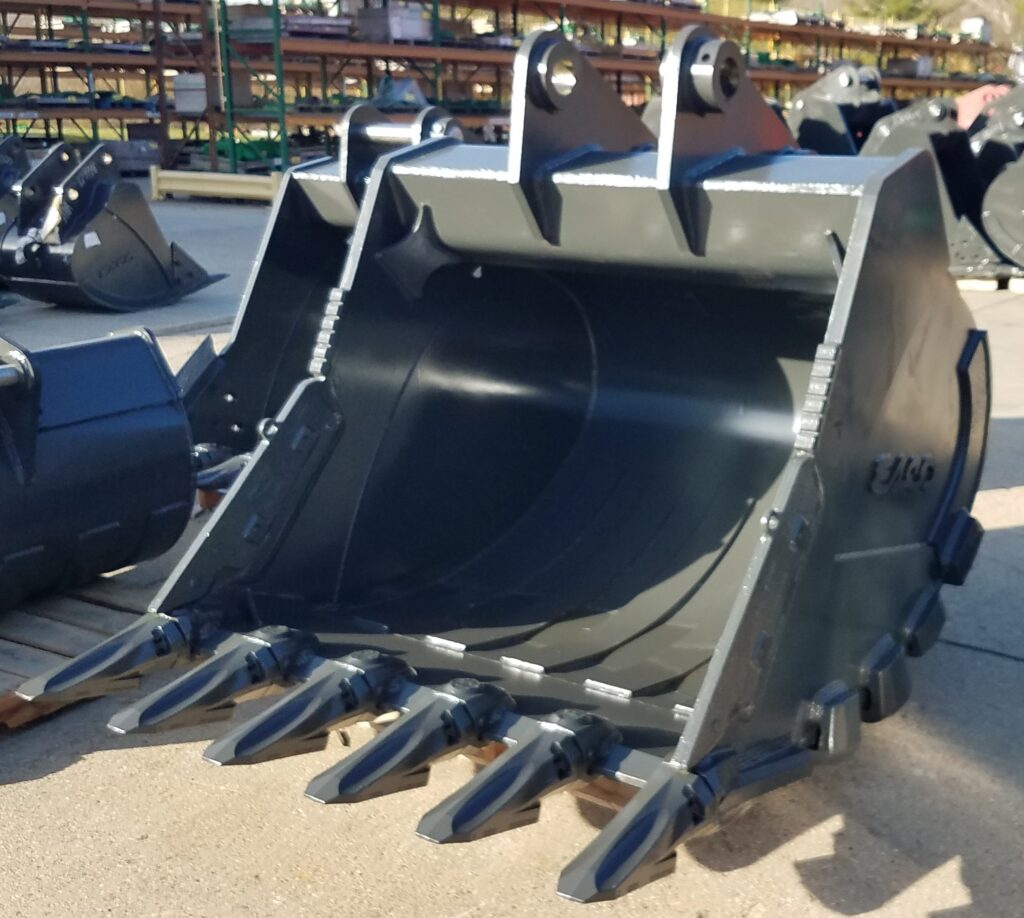In the world of mining operations, excavators are workhorses that tirelessly dig, scoop, and transport materials. The choice of excavator bucket can significantly impact productivity, efficiency, and the overall success of a mining project. With various types of buckets available, each designed for specific tasks, making the right selection is crucial.

- Standard Excavator Bucket
- Purpose: Standard buckets are versatile and suitable for a wide range of tasks, including general digging and material handling.
- Advantages: They offer good digging and loading capabilities and are typically the default choice for most excavators.
- Limitations: Not specialized for specific tasks, which may result in reduced efficiency for certain mining operations.
- Rock Bucket
- Purpose: Designed for heavy-duty mining operations involving abrasive materials like rocks and hard soil.
- Advantages: Reinforced construction and wear-resistant materials make them ideal for tough conditions, offering extended lifespan.
- Limitations: Less efficient for softer materials, potentially leading to overexertion of the excavator.
- Ditching Bucket
- Purpose: Primarily used for shaping and excavating trenches, ditches, and canals.
- Advantages: Features a wider and shallower design for efficient digging and grading tasks.
- Limitations: Less effective for heavy digging compared to standard or rock buckets.
- Clamshell Bucket
- Purpose: Designed for precision tasks such as dredging and material handling.
- Advantages: Offers precise control for grabbing and lifting materials, making it suitable for selective mining.
- Limitations: Limited to specific tasks and may not be as efficient for general digging.
- Skeleton Bucket
- Purpose: Suited for sorting and separating materials, particularly in industries like mining and forestry.
- Advantages: Features a grid-like structure that allows fines to fall through while retaining larger materials.
- Limitations: Less efficient for bulk material handling compared to standard buckets.
- Grading Bucket
- Purpose: Ideal for grading, leveling, and finishing tasks on mining sites.
- Advantages: Typically has a flat bottom and wide cutting edge, making it perfect for achieving smooth surfaces.
- Limitations: Not designed for heavy excavation tasks and may wear out quickly if used for such purposes.
- Tilt Bucket
- Purpose: Offers versatility by allowing the operator to tilt the bucket at various angles, making it useful for precise digging and shaping.
- Advantages: Enhances precision and control in mining tasks, especially in tight or challenging spaces.
- Limitations: May require additional maintenance due to the hydraulic components for tilting.
- Ripper Bucket
- Purpose: Designed for breaking up hard or compacted materials, such as rocky terrain.
- Advantages: Penetrates tough materials effectively, preparing them for subsequent excavation.
- Limitations: Less efficient for material loading compared to standard buckets.
Selecting the right excavator bucket for mining operations is a critical decision that can significantly impact the efficiency and success of your project. Understanding the specific tasks and materials involved is key to making an informed choice. Standard buckets provide versatility, while specialized buckets like rock buckets, clamshell buckets, and grading buckets offer targeted solutions for specific challenges. By carefully considering your project’s requirements and the advantages and limitations of each bucket type, you can maximize productivity and optimize your mining operations.
If you’re in need of different types of buckets, don’t hesitate to reach out to us. Contact Texas Contractors Equipment at 713.776.1212 today or visit us online for more information about the buckets we have to offer you!










Leave a Reply